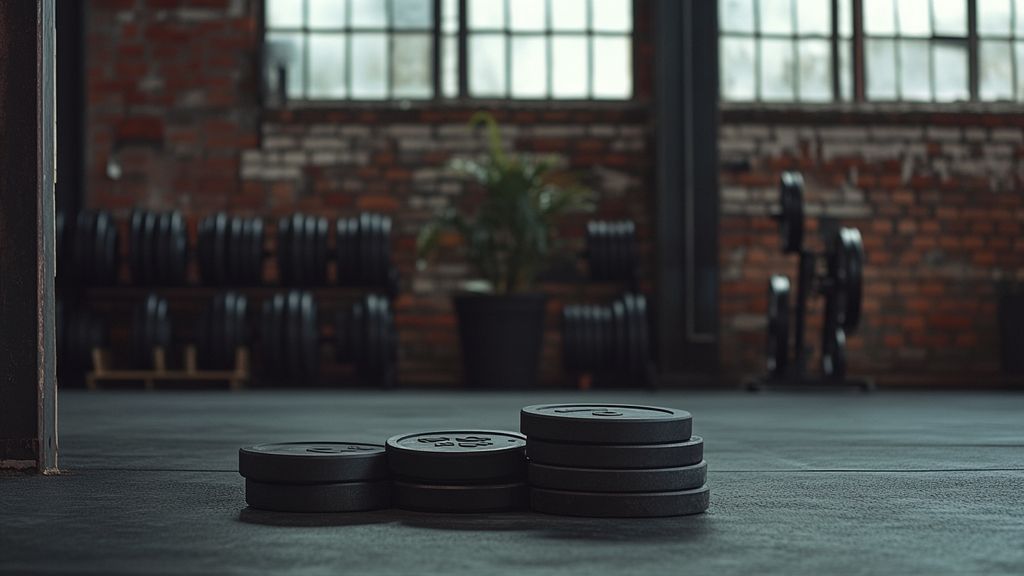Measuring progress in CrossFit can sometimes feel overwhelming, especially with its diverse workout structure. Each session brings new challenges and varied routines, making it easy to lose track of personal gains. This comprehensive guide will explore effective methods to track your performance and ensure you are moving towards your fitness goals, no matter your experience level.
From strength improvements to skill mastery, understanding your progression across these areas is vital for motivation and growth. We’ll cover the key categories of fitness, analyze your benchmarks, and provide you with tangible steps to gauge your development.
Understanding the Categories of Progression
In CrossFit, athletes often focus on four main categories: strength, work capacity, skill, and composition. Each category has its unique metrics for progress, enriching the overall training experience.
Strength
Strength forms the backbone of athletic performance, reflecting your muscle mass and ability to exert force. Progress in this category can be tracked through your lifting metrics, with the One Repetition Max (1RM) often being a standard measure.
Work Capacity
This metric gauges your ability to sustain effort over a workout. Performance in workouts of the day (WOD) can often be measured in time or repetitions, allowing for comparison over time to assess improvements.
Skill
Skill level in CrossFit exercises, such as the clean and jerk, Olympic lifts, or gymnastic movements, is crucial. Tracking your proficiency in these skills can help highlight areas for focused training.
Composition
While aesthetics may play a lesser role for some, tracking changes in body composition—specifically, fat versus muscle—is important for a holistic view of fitness progression.
Tracking Your Strength Improvements

Your strength should be a primary focus, as it’s fundamental for effective performance across all CrossFit workouts. To accurately gauge your strength gains, it’s productive to track your lifting metrics.
One Repetition Max (1RM)
The 1RM is a common benchmark among athletes. Regularly testing your 1RM for major lifts—like the deadlift, squat, and bench press—can vividly illustrate progress. It’s also helpful to log your 5RM and 3RM results, which provide insight without the intensity of a 1RM test.
Progress Tracking Apps
Utilizing the right tools can make tracking strength gains much simpler. An app like Progression allows you to log workouts, while more traditional methods, such as pen and paper or spreadsheets, can efficiently track your data.
Sample Strength Log
Here’s a simple format for logging your strength progress:
| Date | Exercise | Weight (kg) | Reps | Sets |
| 2023-01-15 | Squats | 120 | 5 | 3 |
| 2023-01-22 | Squats | 125 | 5 | 3 |
Progress through Variations
Besides tracking your max lifts, consider variations in rep ranges and rest periods. If you notice an increase in repetitions or the weight lifted at a specific rep range (for instance, doing 6 reps at 80 kg instead of just 5), it signals strength gains. Monitoring these variations regularly can motivate you to push harder and strive for more.
Measuring Work Capacity
Improving your work capacity is fundamental for CrossFit success. This metric is reflected primarily through WOD performance.
Benchmark Workouts
Benchmark workouts, like ‘Fran’ or ‘Murph’, serve as excellent progress indicators. Repeat these known workouts every 4-6 weeks to monitor improvement. Tracking your time’s evolution will underscore your capabilities.
Tracking Recovery
Tracking how quickly you recover from WODs can also be a vital indicator of improved work capacity. Being able to complete a WOD and feel less fatigued afterward illustrates your growing endurance and aerobic capacity.
Utilizing Performance Logs
A performance log should include your WODs and times, helping you see where your strengths lie and what needs development. Incorporating repetition counts for AMRAPs (as many rounds as possible) will help fairly gauge your capacity over time.
Comparison Over Time
Comparing your performance over time is essential. If your time on Fran improves from 8 minutes to 6 minutes after consistent training, that’s a clear indication of work capacity enhancement. Keeping consistent data will help you discover exactly how much progress you are making.
Skill Progression in CrossFit

Developing skills such as double-unders, muscle-ups, or Olympic lifts requires both practice and careful tracking. Skill progression is not always linear, but tracking can streamline your learning process.
Establishing a Skill Tracking Method
Create a dedicated log for skills, noting practice sessions, progress, and any milestones reached. For example, after weeks of trying, you may note that you successfully performed 10 double-unders consecutively. Log this to help recognize improvement.
Breaking Down Complex Skills
Many skills require mastering individual components. Approach training methodically: break down skills into simpler phases and track each. For double-unders, start with perfecting single-unders before attempting double-unders.
Utilizing Coaching Feedback
Incorporating feedback from coaches can provide clarity on areas needing attention and refining technique. If you’re practicing muscle-ups, a coach can ensure you progress appropriately, enhancing both skill and safety.
Setting Skill Goals
Establish small, achievable goals as you progress in mastering complex movements. Perhaps your goal is to achieve a strict pull-up; log each attempt and celebrate small successes along the way.
Tracking Body Composition Changes
Your body composition can often yield important indicators of progress beyond mere weight on the scales. While losing weight can feel indicative of progress, understanding fat versus muscle dynamics is more critical.
Measuring Body Fat
Understanding Lean Mass
Closely monitor lean muscle mass incrementally; a greater emphasis on retaining muscle while losing fat will support overall strength and endurance.
Regular Monitoring and Adjustments
Going Beyond the Scale
Final Thoughts on Measuring Progress in CrossFit

While various methods are available to measure progress in CrossFit, it’s important to remember that fitness encompasses more than mere numbers. Tracking metrics in all categories provides a comprehensive view of your fitness journey. Recognizing your successes across strength, skill, work capacity, and body composition helps build a deeper appreciation for your hard work.
